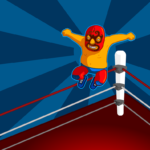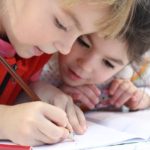The facial expression of your subject can make or break your drawing. You need to properly learn to draw facial expressions in order to convey a message or display feeling on your drawing. Your target audience must feel a connection and pull towards your subject, and an excellent display of emotions can do that.
Feelings are shown in facial expressions
The face can tell a beautiful happy or sad story in your drawing. It is crucial to understand what the eyes, eyebrows, mouth, and nose contributes to the perfection of your face portrayal. By learning the tricks on how to draw each facial feature, you can make your drawing interesting and realistic.
Eyes
The eyes are the primary focus of the whole face, and they can display various emotions. In drawing a face, start with the eyes first and get it right. Let us look into the Emotion Tree for the eyes.
- Sleepy eye – the eyelid is partially covered. The pupil and iris are half-covered, and only a semi-circle is visible.
- Relaxed eye – the eyelid is marked, and it looks like a regular opened eye. The pupil is tangent, which reaches the top edge only.
- Alert eye – the eyelid is not marked, but the eye is regularly opened. Which means that the eye is in a natural state.
- Wide eye – the eye has a big and circular opening. The pupil is free in this eye state, where it does not touch the edge.
The pupil has three types:
- Regular – eyes in a natural state, pupil is in regular size.
- Dilated – pupil is almost twice as large, and it does not apply to wide eye or alert eye.
- Contracted – the pupil is smaller than normal, and it does not appear in sleepy eye or relaxed eye.
Remember that light eyes like grey and blue always appear wider compared to eyes with darker colors. And dark eyes always display utter relaxation than light colored eyes. So when you draw the eyes, take into consideration the colors.
Eyebrows
The eyebrows is the part of the face that can drive the display of emotion. Be very careful in drawing the eyebrows, since the facial expression depends on it. The eyebrows consist of the head and curve. Head is the portion where two eyebrows meet each other, while the curve is the slightly slanted portion in the outer direction. The head and the curve can be drawn in different variations and combination. You can use the three combinations of: at rest, raised, and lowered to create your face drawing.
Mouth
The mouth tells a story of what your subject is feeling, though not as much as the eyes. Artists often say that the mouth can lie, but the eyes never can. Here are the basic mouth expressions that you can use:
- Lips are curved – open or generic mouth shape which means the person is happy, or it can be a grin.
- Lips curved down – it expresses dismay. And if the lips are curved down but the junctions are relaxed, it portrays fear.
- Lower lip curved up, upper lip curved down – the mouth is widely open, probably ready to shout. This mouth shape means that your subject is extremely happy.
- Lower lip curved down, upper lip curved down but larger – this mouth expression is a jaw drop.
- Lips are gathered in the middle – this expression of the mouth can either be a snarl or anger.
Nose
The nose of your subject is actually not expressive and it does not show emotion. But you can add lines or wrinkles to enhance the feeling of disgust or anger.
The Emotion Tree
In drawing a face, you start by creating a blank face. You will then branch out the blank face into the five superior emotions on drawing. And from the five primary emotions, you can create so many mix of emotions.
Relaxed emotion
The relaxed emotion has no face distortion. This is the easiest way to transition from a blank face. In fact, a blank face is in a way a relaxed face. But of course there are so many ways that you can draw a relaxed emotion on paper. A relaxed face can transition to peace, refreshed feeling, and savoring emotion. It can also be turned into sleepy, groggy, bored, lazy, drained, and tired.
Surprised emotion
The surprised emotion features the roundness of the eyes and other features. It can transition into feelings of curiosity, surprise, puzzlement, impressed, or shocked.
Smiling emotion
The smiling emotion is all about the curving up of the face. The blank face can be turned into a smile, real smile, grin, excitement, ecstatic, proud, pleased, amused, laughing, seductive, tender, hopeful, and innocent.
Angry emotion
The angry emotion is optimized by working on the eyebrows and eyes, as well as the mouth. The blank face transitions into a frown, upset, anger, furious, enraged, grumpy, pout, vindictive, disgusted, skeptical, sneering, haughty, and arrogant.
Sad emotion
The sad emotion displays a face that is curving down. It is often accompanied by a drawing of a person with slumped shoulders. Starting with a blank face, you can create display of emotions like sadness, so-so, blue, depressed, distressed, crying, pain, disappointed, frustrated, stressed, worried, scared, terrified, shy, guilty, and embarrassed.
Body language
As an artist, you need to know that the facial expression often corresponds to the body language of your subject.
- Hands on hip – displays confidence, power, and determination.
- Arm-cross – defensive stance, dislike, self-comforting, arrogance, and disagreement.
- Touching self – it speaks of stress and touching comforts the subject. It usually conveys frustration, low self-esteem, uncertainly, and perplexity.
Final say
You need to have absolute attention to detail in drawing face. Practice drawing a live human all the time in order to make things easier for you. Remember that the right emotions must be conveyed on canvas, since the wrong one can ruin your artistic career, not to mention your ego. Practice every day, and continue to evolve in your drawing style.


